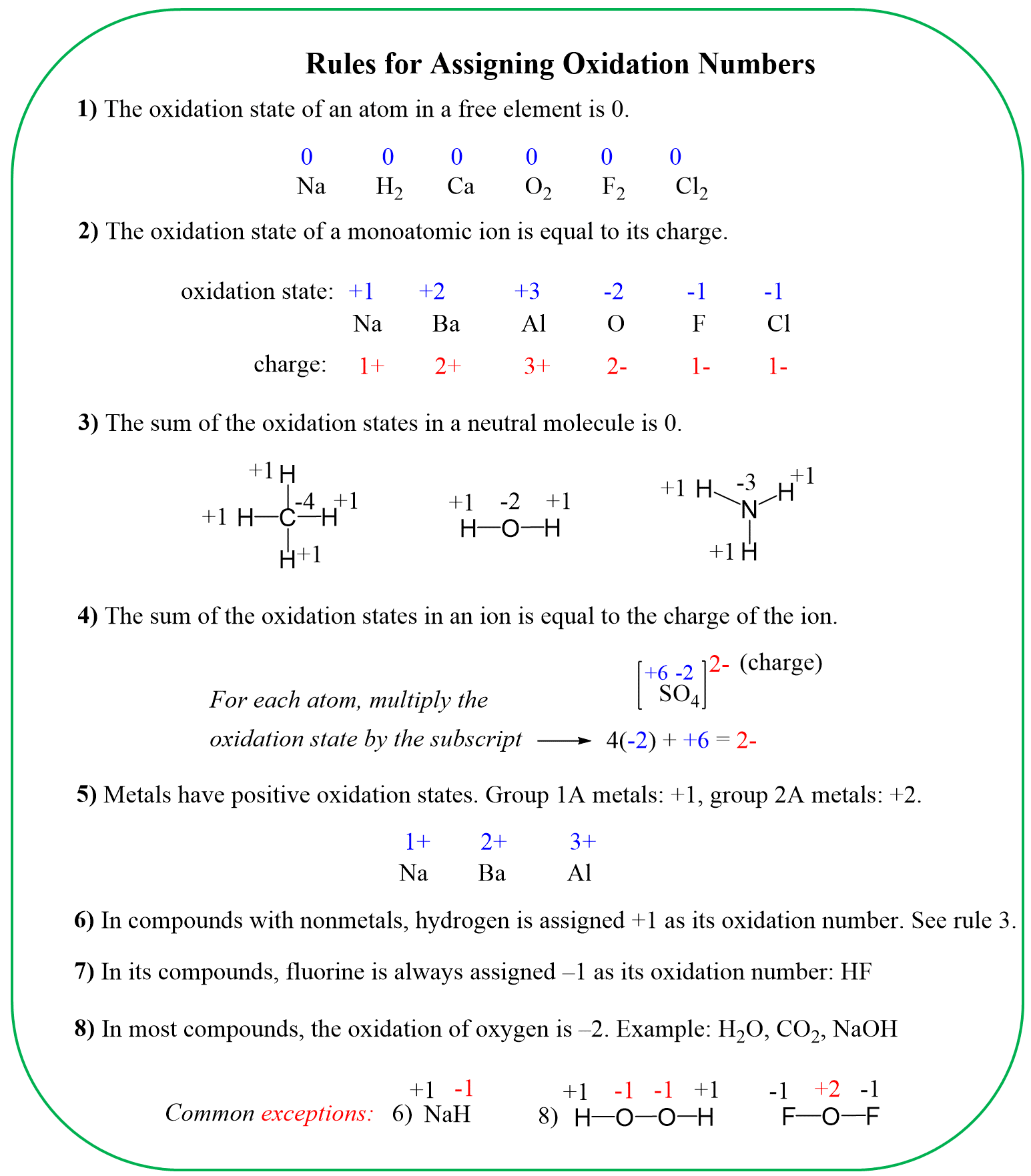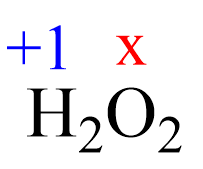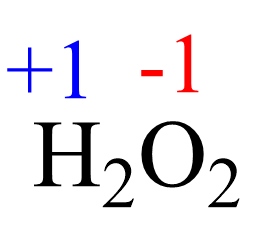In this post, we will determine the oxidation numbers in hydrogen peroxide, H2O2.
To determine the oxidation number of an atom(s) in a molecule or an ion, start with the known oxidation numbers and the rules summarized below:

Keep in mind that the summary is zero for neutral molecules and is equal to the charge for ions.
For H2O2 the element with a standard oxidation state is hydrogen which is +1, and we need to determine the oxidation state of the oxygen.
Rule 6 – The oxidation of hydrogen is +1:

Assign x for the oxidation state of O and set up an equation:

2(+1) + 2x = 0, x = -1

This is an unusual oxidation number of oxygen in a molecule, and the reason is that the two oxygens are connected, so they each pull the electron density only from one hydrogen atom:

We discussed the Lewsis structure and hybridization of H2O2 in a separate article which you can find here.
Further Reading
- Solutions
- Strong and Weak Electrolytes
- Dissociation of Ionic Compounds
- Molecular, Ionic, and Net Ionic Equations
- Molarity
- Dilution
- Ion Concentration
- Precipitation Reactions
- Definitions of Acids and Bases
- Naming Acids and Bases
- Acid-Base Reactions
- Displacement Reactions
- Predicting The Products of Chemical Reactions
- Stoichiometry of Reactions in Aqueous Solutions
- Acid-Base Titrations
- Oxidation State
- Oxidation-Reduction (Redox) Reactions
- Balancing Redox Reactions
Reactions in Aqueous Solutions – Practice Problems
More examples of the oxidation state in this multiple-choice quiz:

